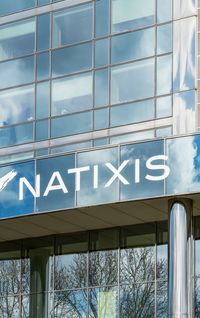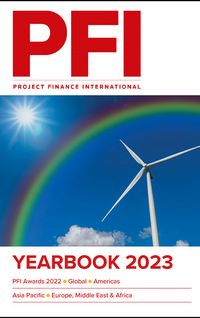The massive increase in demand for EVs, together with the need to address intermittency issues associated with renewable energy, means that there is an unparalleled call for batteries. These processes require an unprecedented volume of lithium extraction, processing and battery manufacturing. As a consequence, the battery value chain is in the spotlight more than ever before. By partners Daniel Giemajner and Matt Hardwick in the projects, energy and transition practice at Akin Gump in London.
In 2021, global electric vehicle (EV) sales reached a record-high of 6.9m vehicles – a 107% increase from 2020 and the first time since 2012 that EV sales have doubled in a single year, with 17% of all cars sold in Europe being EVs. In 2022, worldwide revenues in the EV market are projected to reach US$384bn, with an average annual growth rate of 17.75% expected until 2027, source, Statista. The UK Government Committee for Climate Change (CCC) has indicated that, to meet net-zero targets, by 2035 all new vehicles should be electrically propelled.
Investment is already flowing into battery and cathode manufacturing, as well as the subsequent manufacturing of EVs and utility-scale batteries by automakers and original equipment manufacturers (OEMs). Equally, investment in new raw material production is increasing, with new mines planned across North America, Europe and South America, albeit at a slower pace than is required to meet demand. However, there is a notable gap in the value chain; investment in lithium processing and conversion facilities is lagging far behind required capacity. Unless addressed, this will create a critical bottleneck in the production of battery cells and a barrier to achieving net-zero targets.
Project finance solutions will need to be deployed to secure the level of capital required to meet this infrastructure gap and signs of this are already emerging. We consider here the opportunity for investment and the key considerations for investors and funders of lithium processing and conversion facilities.
Market overview
China currently controls 65% of the world’s lithium processing infrastructure and is continuing to invest heavily, recognising its importance to the wider battery value chain. This means that, even if the rest of the world is ramping up raw material, cathode and EV production, it still lags far behind China in terms of processing capability, creating a bottleneck that cannot be addressed overnight. Developing these facilities takes time and money, and to move from a final investment decision (FID) to full optimisation can take anywhere from five to ten years – construction completion is not an end-point.
The effect of this bottleneck is profound as demand will outstrip supply. At best, this will cause price increases for spodumene and brine concentrate, as well as processed lithium, ie lithium carbonate and lithium hydroxide monohydrate. At worst, it will create concerns over the security and independence of battery supply chains.
Opportunities emerging
There is an abundance of regulation emerging across the US, Europe and the UK, all of which is designed to stimulate the extraction and production of critical materials, encourage investment in lithium conversion and processing in the West, and facilitate a repositioning of the battery value chain more generally.
Recent legislation includes the US Inflation Reduction Act (IRA), which has significant ramifications for the battery industry, but chief among them is the introduction of a new clean vehicle tax credit. Critically, eligibility for this tax credit is based in part upon the critical minerals and batteries being sourced, processed and assembled in the US or in countries with whom the US has a free trade agreement.
While there is a significant amount of detail in the IRA regarding the eligibility criteria, the implication is that the US needs to quickly stimulate its own lithium conversion and processing sector. We are already seeing evidence of this across the US, as well as across Europe – where a significant number of new lithium processing facilities are in their infancy, including Keliber in Finland, Tees Valley and Green Lithium in the UK, and Rocktech in Germany.
For those interested in developing new processing capability, they will inevitably see these regulations as creating opportunity in the form of new, more localised partners and customers that actively want to buy processed lithium closer to battery manufacturing sites. This will be particularly pronounced if developers are able to power production through renewable energy sources. In the medium to longer-term, producers of lithium carbonate and lithium hydroxide monohydrate can expect increased scrutiny (and reporting requirements) from their customers as to the origin and carbon-intensity of their technology and raw materials. Plants will have to be designed with this in mind.
Key project finance issues
The project finance market for these facilities is nascent. That said, there are certain threshold issues that are emerging across the market and invariably have to be navigated by developers and funders. These include:
* Business structure – At one end of the spectrum are developers operating a fully merchant tolling facility. At the other end are those that will seek to buy spodumene or brine concentrate and sell the refined lithium hydroxide monohydrate or carbonate, thereby taking commodity price risk on both the feedstock and offtake. Where the business sits along this spectrum will impact its overall risk profile and the nature and price of the financing that it can expect to attract. It will also have a knock-on effect on the other key issues, particularly those regarding feedstock and commodity price exposure. There is no "one size fits all" model, and different variations are emerging all the time, including from those that assert that shipping spodumene is inefficient and instead contend that intermediate products, such as lithium carbonate, will have to be produced at source and then transported to conversion facilities.
* Feedstock – Volume certainty and chemical specification of feedstock is likely to be front and centre of any investment analysis. Investors and funders will wish to understand whether feedstock is coming from a single source or counterparty and the certainty of that supply. For example, how is that counterparty proposing to supply the facility? Is it a trader or producer? What does the credit analysis look like? How certain is supply given demand for lithium globally and what contractual protections are in place to prevent the supplier from simply breaching the contract if it receives a better economic offer? If feedstock is expected to come from multiple sources, then this potentially mitigates some of the concerns around volume and offtaker failure, but creates additional complexity if the resulting chemical specification is likely to be more varied. This may have implications for the ongoing optimisation of the plant and may necessitate some in-built design tolerance.
* Mine integration – Some of the projects coming to market contemplate a closed-loop lithium solution, whereby a single company will develop a lithium mine and use the raw material produced from its mine as feedstock for its own processing and conversion facility. This has the potential to address certain issues regarding feedstock availability and specification but creates complexity, including "project on project risk". Lessons learned with regard to "project on project risk" in the context of LNG, clean hydrogen and infra of resource transactions can be deployed to address perceived bankability risks. A further consideration in this regard will be the need for a level of in-country processing at or near mine site prior to export to reduce transportation costs. This is particular the case when up 97% of spodumene is considered to be waste material.
* Recycling and ethical sourcing – A key sustainability consideration will be the availability of recycled materials that can be reprocessed for further use. It is estimated that world-class battery manufacturers have a scrap rate of 10%. The opportunity to displace the import of raw materials with recycled materials will increasingly form part of the conversation.
Ethical sourcing requirements are likely to feature significantly in the near term, presenting challenges for conversion facilities relying on feedstock from multiple sources without fixed longer-term arrangements. Close attention will have to be paid to the labour conditions in countries in which raw materials are sourced, and particularly the use of child labour. Certificates of origin, blockchain trackers and product passports are all terms we are likely to hear more about in the future. A requirement for extensive supply chain diligence already underpins proposals forming part of the EU Battery Regulations that we can expect to see enacted in 2023.
* Pricing risk – Developer exposure to commodity price fluctuations, both in terms of feedstock and offtake, is critical. This is perfectly illustrated by the fact that the price of lithium has risen by approximately 600% in 12 months. There will be a balance to be struck between: (i) maintaining potential upside to lithium price increases; (ii) achieving some degree of feedstock certainty (at least in terms of volume); and (iii) recognising that this is a suppliers’ market.
Any processing facility seeking project finance while maintaining some level of pricing exposure will have to work through these issues with potential funders and can expect detailed market due diligence (namely the impact of new technologies, such as direct lithium extraction and requirements for the use of recycled materials). The current gap in supply and demand means we could see more robust forecast pricing, which should support investment despite some degree of risk.
* Offtake strategy – Achieving a binding, long-term, take-or-pay contract that has any degree of pricing certainty with an OEM or battery cell manufacturer is likely to be challenging or potentially unattractive from an economic perspective. While memoranda of understanding (MoUs) and framework agreements abound, these are not necessarily binding, long-term offtakes that can underpin a project financing. There may be some possibility to achieve cap-and-collar structures that can enhance investment decisions, though only if feedstock costs are appropriately managed. While typical project finance banks and export credit agencies (ECAs) may look for long-term certainty, we would suggest that parallels need to be drawn with the petrochemicals sector, where it can be commonplace to achieve financial close without contracted offtake. There are lessons from the downstream oil and gas and petrochemicals sectors that can be transposed into a new lithium processing facility to facilitate investment.
* Construction risk – Contracting frameworks will need to be carefully considered and the risk allocation of delay and cost overrun properly understood. The impact of construction delays on feedstock and offtake contracts will also need to be managed, particularly against a backdrop of other projects being late and over budget and losing anchor suppliers or customers as a result. There may be contractual and/or bespoke insurance solutions available to manage this risk.
Historically, there is precedent for fixed-price, turnkey engineering, procurement and construction (EPC) contracts in various process-based sectors, including lithium processing. However, in a growing sector with new technology and where delays and cost overruns have been highly publicised it may become more challenging to achieve these terms, particularly at economical rates. We are seeing the emergence of engineering, procurement and construction management (EPCm) contracting in this sector, which creates its own challenges in terms of interface, risk allocation and time and cost certainty, but when properly implemented can be an effective delivery tool. Key considerations in this context will be: (i) the inclusion of an extended FEED (front end engineering design) phase; and (ii) the inclusion of an extensive optimisation period following construction completion.
* Sustainability and power – Converting and processing lithium is energy-intensive and manufacturing capacity of this scale requires a significant amount of stable and reliable power. Given regulatory developments, this power will increasingly need to be green. While this creates some challenges regarding intermittency of supply, any dependency on fossil fuels may undermine the demand story or detract from the premium sometimes charged for a "green lithium" product. The need for cheap and long-term renewable energy can be addressed in several ways, including through site location, a corporate PPA or by co-locating a renewable energy source and battery storage system. Sustainability considerations will also extend to the entire logistics and supply chain. Newer projects must plan ahead for likely future scrutiny, including the environmental impacts associated with extracting feedstock. The proposals forming the EU Battery Regulations require a declaration with regard to the carbon footprint of the battery, with maximum lifecycle carbon footprint thresholds being proposed.
* Waste material and by-products – The market for by-products from the refining process can have a material impact on project economics and sustainability credentials. For example, there is concern in certain quarters that the market outlook for sodium sulphate, a by-product of the sulphate process used to produce lithium hydroxide, is negative, as its main consumers (the detergents and wood pulp industries) are shifting to alternative products. This could lead to material disposal costs for a project. Technological advances may see a shift away from the sulphate process to achieve lower production costs and more marketable by-products, eg nitrates and gypsum, to create financial upside for the project.
* Allowing new plants/trains to come online and capacity expansions – Part of the short-term rationale for developing new processing and conversion capacity in North America or Europe is the ability to capitalise on first mover advantage and gain a material part of the value chain by subsequently expanding plant capacity or developing new trains or facilities. For investors and project finance lenders supporting the first plant, this will represent both an opportunity and a challenge. While attracted by the potential for further growth, investors and lenders will want to ensure there is no slippage of management focus and, ideally, that the first plant is operating at steady state before new facilities are developed (though this may not be commercially viable). In other sectors, such as mining and LNG, we have precedent for building-in the flexibility to perform future expansions (and "baking" this into financing documentation) subject to certain financial and technical tests being satisfied.
Availability of finance
There is an indisputable need for new lithium processing and conversion facilities in North America and Europe. Without this, the gap in the battery value chain will continue to grow and ultimately act as a bottleneck for achieving net-zero targets, as well as creating broader geopolitical concerns. Fortunately, for the right projects there is both political and commercial support. There is increasing appetite from private equity, private credit, commercial banks and multilaterals to support the sector, provided that the key issues outlined above are appropriately managed. While these are bespoke facilities, in most instances there is no need to reinvent the wheel. Solutions that have been successfully deployed in the mining, LNG, downstream oil and gas and petrochemicals sectors can also be adopted to successfully deliver new projects in this space.
To see the digital version of this report, please click here
To purchase printed copies or a PDF of this report, please email leonie.welss@lseg.com

















